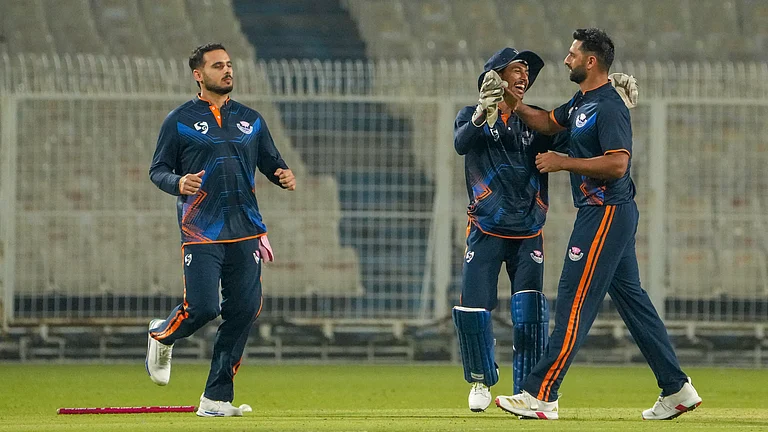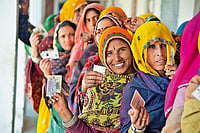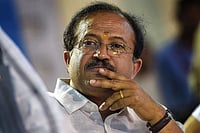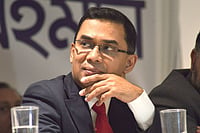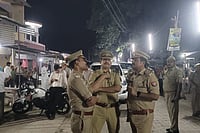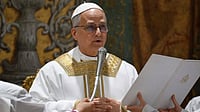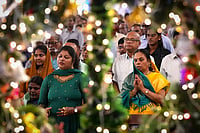Bhattarai, then, crossed the border and enrolled in Chandigarh's Architecture and Engineering College as a student in 1972. Five years later, the desire for an M Tech degree saw him joining the Delhi's School of Planning and Architecture. But the thirst for knowledge couldn't be quenched: he joined the Jawaharlal Nehru University to do his PhD under Atiya Habib. The subject of his thesis: 'Natural and regional issues in Nepal's underdevelopment'.
It was here the metamorphosis took place, and Bhattarai, the avid student, gradually also revealed Bhattarai, the political activist. His eyes to the Nepal he had left behind were opened through his interaction with jnu's durbans and chowkidars and, through them, the boys who worked in the city's myriad seedy hotels. Their deplorable plight inspired Bhattarai to provide them a life of dignity and equality.
The door to political activism opened in 1978, when a popular Nepali communist leader, P.L. Shrestha, died in Delhi, orphaning the trade union network he had established among migrant workers in India. Already a part of the social life of the impoverished Nepalis, Bhattarai grasped the implications of the void Shrestha's death had caused. The lover of books stepped out from the sequestered life of jnu to work among Nepali workers.
It was then that he came in contact with another Nepali radical communist leader in exile, Mohan Bikram Singh, who was trying to organise Nepalis in India for waging an armed movement against the absolute monarchy in Nepal. Singh tutored Bhattarai in the ideology of the international communist movement. A rebel was born who, however, didn't quite know his precise destination.
For the moment, though, Bhattarai took up the issue of discrimination Nepalis faced in India, leading protests against the Nepali embassy's apathy towards the plight of its citizens in India apart from burning the midnight oil for his PhD. His activism brought him in touch with human rights leaders like Justice V.M. Tarkunde, Swami Agnivesh and others. He networked with Indian politicians to highlight the issue of poor Nepali women being dragged into the flesh trade.
In 1979, he and other Nepali students in India established the All India Nepali Students Association. President K.R. Narayanan, then the university's vice-chancellor, accepted Bhattarai's invitation to inaugurate the founding conference which attracted many underground and human rights leaders from Nepal. Bhattarai was appointed president of the association, which had as its avowed goal the replacement of absolute monarchy in Nepal with a multi-party democracy.
Bhattarai returned to Nepal in the late eighties, holding a clutch of degrees and beginning a consultancy in Kathmandu. However, even as he continued to work in a couple of urban planning projects of the government, he remained involved in raising human and civil right issues and organising seminars at the Goethe Centre and the Russian Culture Centre in Kathmandu.
In 1990, when multi-party democracy came to Nepal, Bhattarai and Prachanda together floated the Samukta Jana Morcha (sjm), which bagged nine seats in the first parliamentary elections. The split the 'bourgeois establishment' engineered in their party convinced the two budding leaders that they didn't have any future in the parliamentary democracy. As a warning of what was to come in subsequent years, Bhattarai, in 1995, submitted a 40-point charter of demands to the government. The message was clear: introduce a republican constitution and radical land reforms or face an armed movement. The response was anticipated: the government was provided a deadline of just 30 days.
But even before the deadline expired, Bhattarai and Prachanda went underground. Their followers attacked a police post in western Nepal's Rolpa district—a 'liberated area' now—and a bank in Bhattarai's home district of Gorkha. Rolpa is typical of western Nepal, suffering as it does from tremendous disparity in the size of land-holdings. It's this area which provides Nepalis who work in hotels or as chowkidars in India. No wonder the region has emerged as the bastion of Maoists, who claim to have established people's government in nine districts here.
Bhattarai doesn't hold the number one position in the organisation, estimated to have around 7,000 armed guerrillas. But he is clearly its most respected and popular leader, even better known than party chairman Prachanda. The leaders are a study in contrast—Prachanda is jovial and outspoken; Bhattarai is dour and reticent. While the former is uncompromising about using the gun to usher in social change, the latter hasn't yet lost faith in the adage that the pen is mightier than the sword.
Indeed, Bhattarai has a soft side to his personality. For instance, before going underground, he took his parents on the char dham pilgrimage in India, fulfilling what is still traditionally considered a son's most important duty and obligation towards his parents. Perhaps it is also because, as a man from the village, he quite understands the grip the monarchy has on Nepalis. For instance, post-palace massacre, his parents Bhoj Prasad and Dharma Kumari said: "The King is considered by Nepalis to be the incarnation of Lord Vishnu.... We bought their portraits after the palace massacre." His parents are also saddened that the Maoist movement their son has initiated has caused so much bloodshed and pain.
It is probably their understanding of the complex Nepali psyche that has seen Bhattarai and Prachanda come together to accept the government's peace initiative, perhaps keen not be portrayed as the Stalins of this new century.










